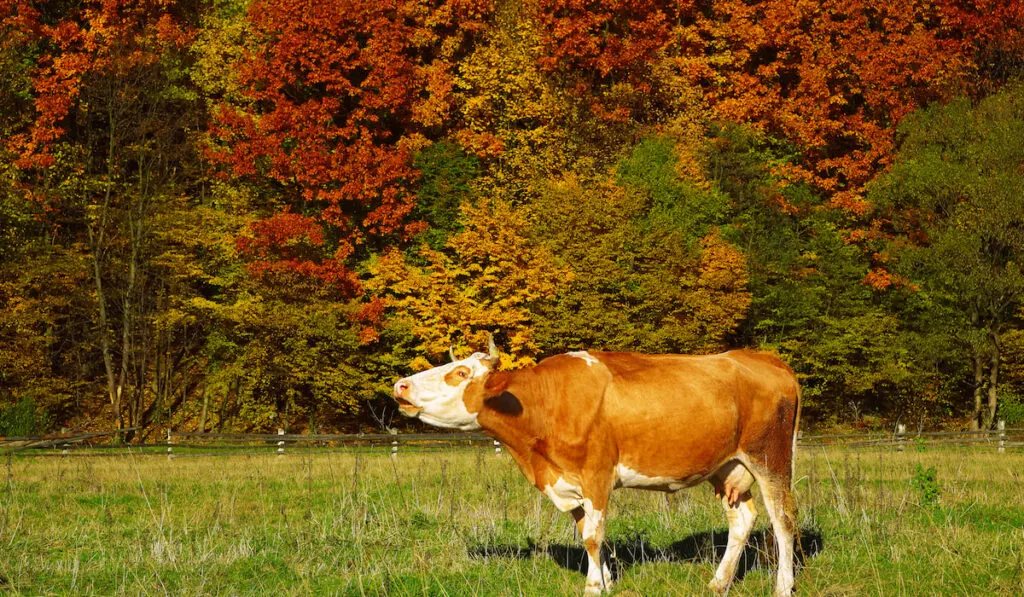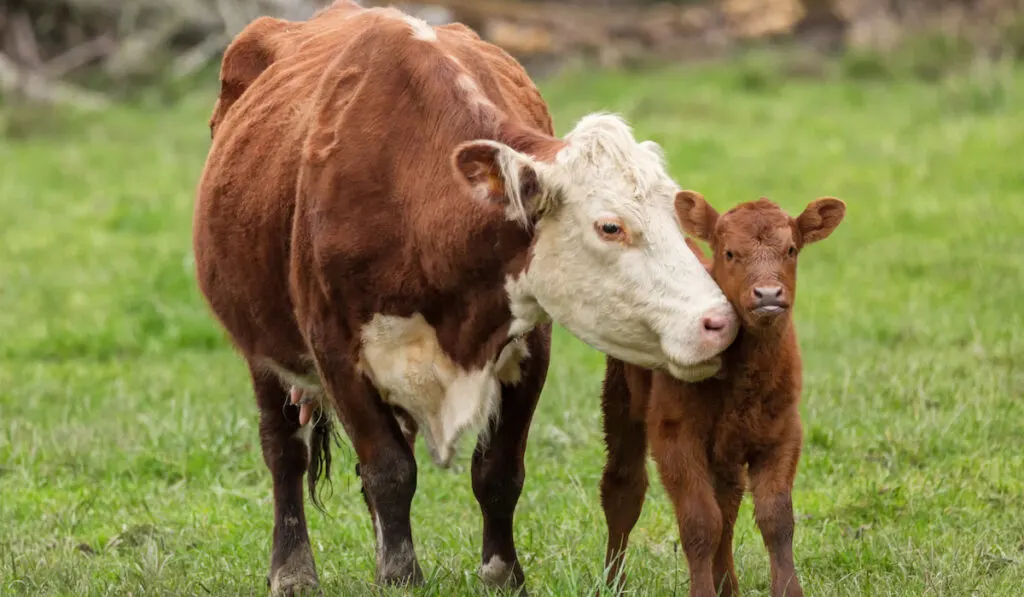If you’ve ever wondered how cows communicate with each other, this article should have the answers you seek.
A cow once said to another cow, “MOOOOO!” and the other cow replied by wagging its tail.

Like humans, cows communicate with each other about food, weather, and even their emotions. Cows have individualized voices – the same way humans have unique voices – and they communicate over short and long distances.
The lead author of a study carried out at the University of Sydney revealed that the vocal individuality of cattle is relatively stable over various emotionally loaded farming contexts. (source)
These individualized voices help them to maintain contact with the herd and express different emotions.
Table of Contents
6 Ways Cows Communicate With Each Other
Cows can communicate with each other using visual or vocal signs.
Visual communication is used to indicate aggressive and reproductive states. It is less subtle in leashed animals compared to moving animals, and the tail is a vital signaling device in visual communication.
Cows use vocal communication in identification, greetings, to display fear, and to elicit contact and threats.
Certain vocal sounds are associated with different behaviors or emotional stress. For instance, a cow would stretch a sound longer and louder when in distress or excited.
These differences in sound are essential to the welfare of the cow, and as they grow older, the sounds they produce change.
So, how do cows communicate? Below are six fascinating ways cow communicate with each other:
- Cows commonly wag their tail in response to painful stimuli. Sometimes, they also wag their tail as a threat, especially when they are about to kick.
- Tails are raised during greetings and oestrus display.
- Cows raise their tail and head when finding the source of an external stimulus.
- When cows are frightened or cold, they hold their tail between their legs.
- Lateral wagging of the tail is used for fly removal and in response to irritations.
- When cows are aroused either by surprise or distress, the white portion of their eyes increases in size.
Why Do Cows Moo?
If you have ever traveled to the countryside, you may have heard a cow moo. If you haven’t heard a cow moo, you could check online to see videos or listen to audio of mooing cows.

Now, if you’ve ever wondered why cows moo, the answer is quite simple. Mooing is one of the ways cows interact and express their feelings.
More specifically, cows moo for the following reasons:
To Make New Friends
When humans change their environment, one of the things we try to do is to network and connect with the people in the new environment. The same thing applies to cows.
Cows moo when they get off the truck that carried them to a new field. Since each cow has a unique moo sound, mooing helps cows reconnect with old friends, make new friends, and figure out their new environment.
To Communicate Hunger
Cows moo to show that they are hungry. So, when your cow is mooing, it might just be letting you know that it’s grazing time. Cows will also moo when they find food; they do this to alert the rest of the herd.
For a Mating Signal
Animals display different signals to the opposite sex to show that they are ready to mate. In the case of cows, mooing sometimes serves as a mating call to the opposite sex.
To Show Distress
Cows will moo when they are in distress, injured, or feel stressed. This mooing is usually high pitched and frequent.
To Find a Lost Calf or Mother
Calves make high-pitched sounds when they are separated from their mother, while cows make low-pitched sounds when they communicate with their calf. The calves also make a distinct moo when they want milk and can’t find their mother.
To Signal the Need for Milking
Cows like to be milked about 3-5 times a day. When there is a delay in their milking time, they moo to call out the farmers.
How Cows Communicate With Their Calves

A University of Nottingham and the Queen Mary University of London study identified two distinct maternal calls in cows.
When cows are with their calves, they communicate with low-frequency calls. On the other hand, when the calves are out of sight, the calls are louder and at higher frequencies.
Calves use the third call to get their mothers when they need to suckle. The three calls are individualized, and it is possible to distinguish each of these calls according to the said study.
Final Thoughts
Cows are highly social, and they interact with one another in different ways. They communicate with each other using signals and sounds, as described above. While they might be hard to understand, recognizing these signals is essential to the welfare and survival of your cows.
Resources
- https://harvestpublicmedia.org/post/why-do-cows-moo-here-are-few-reasons
- https://nature.com/articles/s41598-019-54968-4#Sec6
- https://farmhouseguide.com/why-do-cows-moo-at-night/
- http://www.wellbeingintlstudiesrepository.org/
